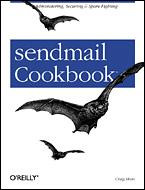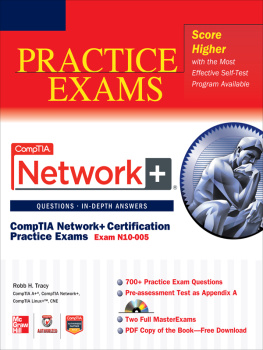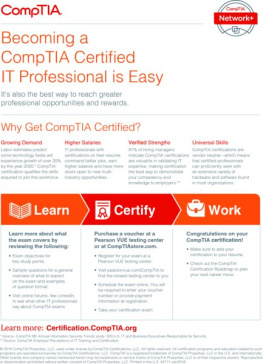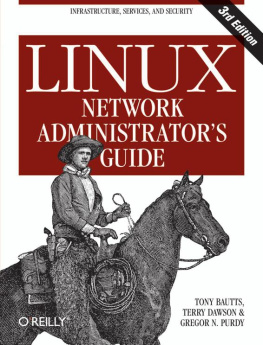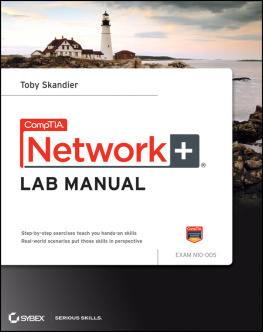Preface
The first edition of TCP/IP Network Administration was written in 1992. In the decade since, many things have changed, yet some things remain the same. TCP/IP is still the preeminent communications protocol for linking together diverse computer systems. It remains the basis of interoperable data communications and global computer networking. The underlying Internet Protocol (IP), Transmission Control Protocol, and User Datagram Protocol (UDP) are remarkably unchanged. But change has come in the way TCP/IP is used and how it is managed.
A clear symbol of this change is the fact that my mother-in-law has a TCP/IP network connection in her home that she uses to exchange electronic mail, compressed graphics, and hypertext documents with other senior citizens. She thinks of this as just being on the Internet, but the truth is that her small system contains a functioning TCP/IP protocol stack, manages a dynamically assigned IP address, and handles data types that did not even exist a decade ago.
In 1991, TCP/IP was a tool of sophisticated users. Network administrators managed a limited number of systems and could count on the users for a certain level of technical knowledge. No more. In 2002, the need for highly trained network administrators is greater than ever because the user base is larger, more diverse, and less capable of handling technical problems on its own. This book provides the information needed to become an effective TCP/IP network administrator.
TCP/IP Network Administration was the first book of practical information for the professional TCP/IP network administrator, and it is still the best. Since the first edition was published there has been an explosion of books about TCP/IP and the Internet. Still, too few books concentrate on what a system administrator really needs to know about TCP/IP administration. Most books are either scholarly texts written from the point of view of the protocol designer, or instructions on how to use TCP/IP applications. All of those books lack the practical, detailed network information needed by the Unix system administrator. This book strives to focus on TCP/IP and Unix and to find the right balance of theory and practice.
I am proud of the earlier editions of TCP/IP Network Administration . In this edition, I have done everything I can to maintain the essential character of the book while making it better. Dynamic address assignment based on Dynamic Host Configuration Protocol (DHCP) is covered. The Domain Name System material has been updated to cover BIND 8 and, to a lesser extent, BIND 9. The email configuration is based on current version of sendmail 8, and the operating system examples are from the current versions of Solaris and Linux. The routing protocol coverage includes Routing Information Protocol version 2 (RIPv2), Open Shortest Path First (OSPF), and Border Gateway Protocol (BGP). I have also added a chapter on Apache web server configuration, new material on xinetd, and information about building a firewall with iptables. Despite the additional topics, the book has been kept to a reasonable length.
TCP/IP is a set of communications protocols that define how different types of computers talk to each other. TCP/IP Network Administration is a book about building your own network based on TCP/IP. It is both a tutorial covering the why and how of TCP/IP networking, and a reference manual for the details about specific network programs.
Audience
This book is intended for everyone who has a Unix computer connected to a TCP/IP network.[] This obviously includes the network managers and the system administrators who are responsible for setting up and running computers and networks, but it also includes any user who wants to understand how his or her computer communicates with other systems. The distinction between a system administrator and an end user is a fuzzy one. You may think of yourself as an end user, but if you have a Unix workstation on your desk, youre probably also involved in system administration tasks.
Over the last several years there has been a rash of books for dummies and idiots. If you really think of yourself as an idiot when it comes to Unix, this book is not for you. Likewise, if you are a network administration genius, this book is probably not suitable either. If you fall anywhere between these two extremes, however, youll find this book has a lot to offer.
This book assumes that you have a good understanding of computers and their operation and that youre generally familiar with Unix system administration. If youre not, the Nutshell Handbook Essential System Administration by leen Frisch (published by OReilly & Associates) will fill you in on the basics.
[] Much of this text also applies to non-Unix systems. Many of the file formats and commands and all of the protocol descriptions apply equally well to Windows 9x, Windows NT/2000, and other operating systems. If youre an NT administrator, you should read Windows NT TCP/IP Network Administration (OReilly).
Organization
Conceptually, this book is divided into three parts: fundamental concepts, tutorial, and reference. The first three chapters are a basic discussion of the TCP/IP protocols and services. This discussion provides the fundamental concepts necessary to understand the rest of the book. The remaining chapters provide a how-to tutorial. cover how to perform the ongoing tasks that are essential for a reliable network: security and troubleshooting. The book concludes with a series of appendixes that are technical references for important commands and programs.
This book contains the following chapters:
gives the history of TCP/IP, a description of the protocol architecture, and a basic explanation of how the protocols function.
describes addressing and how data passes through a network to reach the proper destination.
discusses the relationship between clients and server systems and the various services that are central to the function of a modern internet.
begins the discussion of network setup and configuration. This chapter discusses the preliminary configuration planning needed before you configure the systems on your network.
describes how to configure TCP/IP in the Unix kernel, and how to configure the system to start the network services.
tells you how to identify a network interface to the network software. This chapter provides examples of Ethernet and PPP interface configurations.
describes how to set up routing so that systems on your network can communicate properly with other networks. It covers the static routing table, commonly used routing protocols, and gated, a package that provides the latest implementations of several routing protocols.
describes how to administer the name server program that converts system names to Internet addresses.
describes how to configure many common network servers. The chapter discusses the DHCP configuration server, the LPD print server, the POP and IMAP mail servers, the Network File System (NFS), the Samba file and print server, and the Network Information System (NIS).
discusses how to configure sendmail, which is the daemon responsible for delivering electronic mail.


